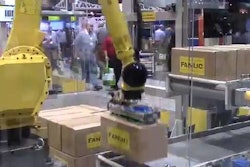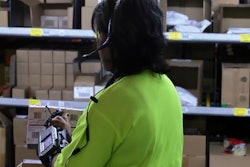
Blame it on Amazon. Recent conversations with supply chain executives confirm that the supply chain is broken because of a number of factors, chief among them omni-channel retailing. Consumers now expect that they can receive goods within a couple of days of being ordered, regardless of where they live.
While it’s true that traditional retail supply chains increased efficiencies, by its very nature, a traditional supply chain is linear—and that doesn’t work well today. Because with the advent of omni-channel, instead of manufactured products shipping to a distribution center and then to stores, customer orders are now also moving from store to store and store to consumer. That makes supply chains more like spider webs than hub and spokes. So regardless of how efficient logistics processes may be, with new challenges and opportunities in retail, changes to the supply chain must come.
Supply Chain Broken
Traditionally, the retail supply chain function was responsible for getting product to stores, not the consumer. While supply chain delivery is evolving some—from a single centralized distribution center (DC) to mini-distribution hubs—the basic supply chain delivery-to-store premise persists.
Omni-channel retailing is wiping out many of the cost savings gained from centralized distribution, as aggregated shipments are making way for scores of small expedited shipments moving from store to store or directly to the end consumer. As a result, many stores are now full of individual orders in small boxes, stacked up high in their backrooms. That blows away efficiencies. In fact, if you talk to retailers about omni-channel, most admit that they aren’t doing it profitably.
The problem is that retailers neither trust their own inventory, nor find it straightforward to ship the inventory that they can find. Retailers say that, on average, it takes almost 30 minutes to fulfill a single omni-channel order from stores. And the number of daily omni-channel orders for a given store may vary by 10 fold. So planning labor needs is difficult at best. In fact, if you think about supply chain being a well-oiled machine, omni-channel threw a wrench in the works, and in many cases, changed inventory allocation, replenishment and fulfillment processes for good.
To fix the supply chain machine, retailers often try to compensate manually by increasing their inventory buffer to 15 to 20 percent. This makes CFOs cringe, because excess inventory bloats the balance sheet and doesn’t necessarily guarantee that the customer’s desired item is in stock at the point of consideration. Overstocks can be as problematic as out-of-stocks, since additional items in the back room and sales floor make it harder to find specific items and compete for shelf space.
And retailers say that the practice of increasing store labor with lower paid temporary workers to pick orders doesn’t work out because these associates typically don’t know where specific items are located and often have a difficult time understanding what is being ordered based upon 35-word ordering system descriptions. As a result, they often give up and cancel the order. Or they pass it off to another store location, which faces the same challenges. In any case, the consumer who originally received an online confirmation of the order now receives either a cancellation or shipment delay notice, both of which net out to a negative customer experience.
What’s an Omni-Channel Retailer to Do?
Given the reality that retail backrooms weren’t designed to be distribution centers, what’s a retailer to do about the associated transportation and labor issues inherent with omni-channel?
To begin, they should consider getting their supply chain experts more involved and employ supply chain technology, such as radio frequency identification (RFID), beyond distribution centers into retail stores themselves.
Consider a dynamic assortment planning system that relies on last year’s inventory figures for the region because it is too time-consuming to get more timely and pertinent information. On top of that, layer employees who don’t know where inventory resides and bloated inventory buffers used to mask the problem. Sound familiar?
The good news is that predicting merchandise demand and obtaining accurate inventory visibility is possible and solves many of these issues.
RFID inventory management can put working capital to work and make it available where needed to reduce the inventory buffer. Using RFID, retailers can know when stock comes into stores, and when it is on shelves for purchase and fulfillment from any channel, whether that be a DC or other retail store location.
Hand in hand with the use of RFID technology, retailers need their supply chain pros to apply supply chain discipline and expertise to retail stores. After all, good store managers are adept at selling and merchandising—not supply chain management. Historically, the supply chain discipline stops at the store. But with the supply chain moving from source manufacturing to stores, logistics is taking on a new importance. To ensure that retail supply chain functions are optimized for omni-channel retailing, retailers should get their supply chain pros and RFID into the picture. It’s the best way to turn outdated hub and spokes into modern and efficient spider webs.
Su Doyle manages Industry Programs at Checkpoint Systems, a global supplier of merchandise availability solutions for the retail industry. She can be reached at [email protected].

















